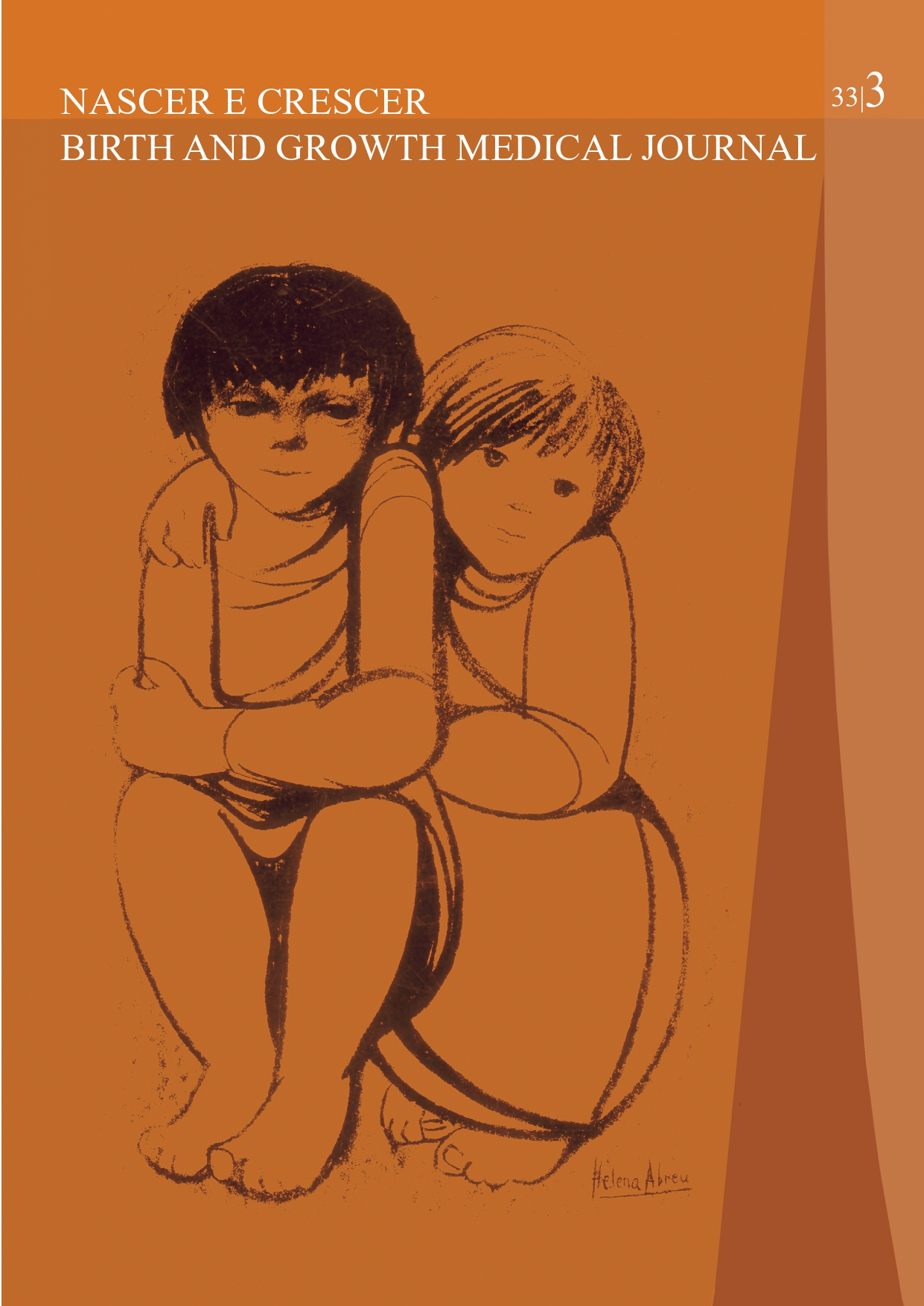Large brown macula in a newborn
DOI:
https://doi.org/10.25753/BirthGrowthMJ.v33.i3.29355Keywords:
congenital melanocytic nevus, dermoscopy, newborn, risk for malignant transformation, skin lesionAbstract
The authors report the case of a male term newborn born after an uneventful monitored pregnancy. On physical examination, he presented with a light brown hyperpigmented homogeneous macule >15 cm in size compatible with a giant congenital melanocytic nevus (CMN). The boy was discharged with indication for Neonatology and Dermatology follow-up. Since then, he has shown adequate psychomotor growth and development and unremarkable neurologic examination and cranioencephalic magnetic resonance imaging.
CMN is a benign proliferation of melanocytes forming theca/nests in the dermal-epidermal junction and/or dermis. It may be present at birth or develop during the first two years of life in any body area. CMN can be classified as small, medium, large, giant, or multiple. Giant CMN is rare and is a risk factor for melanoma.
Management of CMN should be based on age, nevus size, and other factors. Because of the potential for malignancy, giant CMN requires clinical surveillance with neurodevelopmental monitoring and regular dermoscopy, as well as early surgical management of suspicious lesions.
Downloads
References
Pimenta R, Fernandes S, Filipe P, Laureano AO. Dermatoscopia na Idade Pediátrica – Parte I: Tumores Cutâneos. Journal of the Portuguese Society of Dermatology and Venereology. 2020;77(4):291-304. doi: https://doi.org/10.29021/spdv.77.4.1126.
Chien JC, Niu DM, Wang MS, Liu MT, Lirng JF, Chen SJ, et al. Giant congenital melanocytic nevi in neonates: report of two cases. Pediatr Neonatol. 2010;51(1):61-4. doi: https://doi.org/10.1016/S1875-9572(10)60012-5.
Krengel S, Scope A, Dusza SW, Vonthein R, Marghoob AA. New recommendations for the categorization of cutaneous features of congenital melanocytic nevi. J Am Acad Dermatol. 2013;68(3):441-51. doi: https://doi.org/10.1016/j.jaad.2012.05.043.
Thomas L, Puig S. Dermoscopy, Digital Dermoscopy and Other Diagnostic Tools in the Early Detection of Melanoma and Follow-up of High-risk Skin Cancer Patients. Acta Derm Venereol. 2017;Suppl 218:14-21. doi: https://doi.org/10.2340/00015555-2719.
JM Neves, B Duarte, MJ Paiva Lopes. Pediatric melanoma: Epidemiology, Pathogenesis, Diagnosis and Management. Revista SPDV 2020; 78 (2): 107-14. doi: https://doi.org/10.29021/spdv.78.2.1197.
Kinsler VA, Chong WK, Aylett SE, Atherton DJ. Complications of congenital melanocytic naevi in children: analysis of 16 years’ experience and clinical practice. Br J Dermatol. 2008;159(4):907-14. doi: https://doi.org/10.1111/j.1365-2133.2008.08775.
Waelchli R, Aylett SE, Atherton D, Thompson DJ, Chong WK, Kinsler VA. Classification of neurological abnormalities in children with congenital melanocytic naevus syndrome identifies magnetic resonance imaging as the best predictor of clinical outcome. Br J Dermatol. 2015;173(3):739-50. doi: https://doi.org/10.1111/bjd.13898.
Downloads
Published
How to Cite
Issue
Section
License
Copyright (c) 2024 Ana Gisela Santos Oliveira, João Marques, Joaquina Antunes, Pedro Maneira Sousa, Rita Cabral, Isabel Andrade

This work is licensed under a Creative Commons Attribution-NonCommercial 4.0 International License.
Copyright and Authors' Rights
All articles published in Nascer e Crescer - Birth and Growth Medical Journal are Open Access and comply with the requirements of funding agencies or academic institutions. For use by third parties, Nascer e Crescer - Birth and Growth Medical Journal adheres to the terms of the Creative Commons License "Attribution - Non-Commercial Use (CC-BY-NC)".
It is the author's responsibility to obtain permission to reproduce figures, tables, etc. from other publications.
Authors must submit a Conflict of Interest statement and an Authorship Form with the submission of the article. An e-mail will be sent to the corresponding author confirming receipt of the manuscript.
Authors are permitted to make their articles available in repositories at their home institutions, provided that they always indicate where the articles were published and adhere to the terms of the Creative Commons license.


